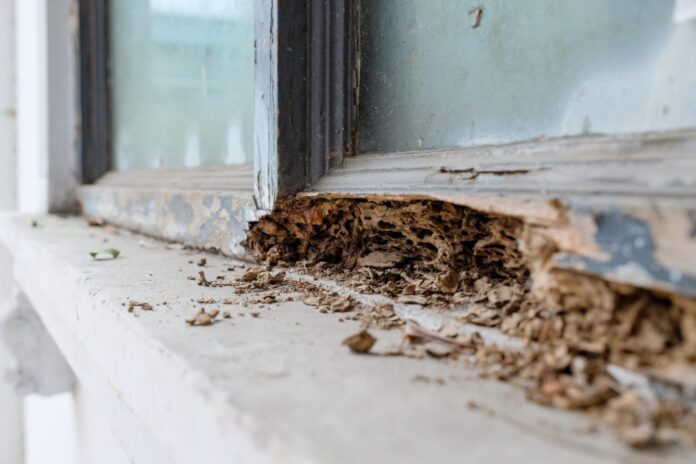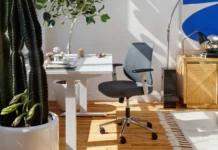
For property owners and managers, maintaining the integrity and value of your property is a top priority. One crucial aspect often overlooked in property maintenance is the importance of routine pest inspections. Pests, if left unchecked, can cause significant damage to structures, create health hazards, and lead to costly repairs. In this comprehensive guide, we will explore the benefits of establishing regular pest inspections and how they contribute to long-term property maintenance.
The Importance of Routine Pest Inspections
At first glance, routine inspection for pest infestations may seem like an unnecessary expense, especially if there are no obvious signs of infestation. However, the absence of visible pests does not guarantee that your property is pest-free. Many pests, like termites, rodents, and carpenter ants, can be present without immediate signs of their existence, quietly causing damage that can be extensive and expensive to repair.
Regular pest inspections are a proactive measure, ensuring that potential problems are identified and addressed before they escalate. This approach not only saves money in the long run but also preserves the structural integrity and aesthetic appeal of your property. Furthermore, for rental properties, ensuring a pest-free environment is crucial for tenant satisfaction and retention.
Understanding Pest Behavior and Risks

Different pests pose different risks, and understanding their behavior is key to effective prevention and control. For instance, termites can compromise the structural stability of a building by eating away at wood, while rodents can cause fire hazards by gnawing on electrical wires. Certain pests, like cockroaches and rodents, can also pose health risks to occupants by spreading diseases and triggering allergies.
Routine inspections conducted by experienced professionals can identify not just the pests themselves but also the conditions that may attract them. For example, moisture problems, cracks in the foundation, and unsealed entry points are all potential attractors for pests. By addressing these issues, you can make your property less inviting to pests.
Setting Up a Routine Inspection Schedule
The frequency of pest inspections can vary depending on several factors, including the location of your property, the type of building, and the history of pest problems. Typically, it’s recommended to have at least an annual inspection. However, in areas with higher pest activity or for older buildings that are more susceptible to infestations, more frequent inspections might be necessary.
It’s important to work with a reputable pest control company that can recommend an inspection schedule based on your specific needs. They can also provide comprehensive reports following each inspection, outlining any findings and recommending preventive or corrective actions.
The Role of Professional Pest Inspectors

Professional pest inspectors bring expertise and specialised equipment that can detect pests that are not immediately visible to the untrained eye. They can perform thorough inspections of hard-to-reach areas like basements, attics, and crawl spaces. Using tools like moisture metres and infrared cameras, they can identify conditions that might not be noticeable during a routine property inspection.
A professional inspector can also provide valuable advice on pest prevention strategies specific to your property. This might include recommendations for landscaping, property repairs, or changes in maintenance practices to reduce the risk of future infestations.
Integrating Pest Inspections into Regular Maintenance
Incorporating pest inspections into your regular property maintenance schedule ensures that they are not overlooked. This integration can be as simple as setting reminders for annual inspections or including pest control considerations in routine maintenance checks. For instance, when performing regular property upkeep, simple actions like checking for cracks in the exterior walls or ensuring proper sealing of windows and doors can be added to the checklist.
Tenant Involvement in Pest Management

In rental properties, tenant cooperation is crucial for successful pest management. Educating tenants about good practices to prevent pest infestations can significantly reduce the likelihood of pest problems. This involves simple steps like proper trash disposal, avoiding leaving food out, and reducing clutter.
Additionally, encouraging tenants to report signs of pests promptly can aid in early detection and swift action. Clear communication channels for reporting pest sightings and a responsive approach to these reports can make a huge difference in managing pest issues effectively.
Responding to Pest Findings
When a routine inspection uncovers signs of pests, immediate action is crucial to prevent the problem from worsening. A comprehensive response plan should include not only the immediate treatment of the infestation but also measures to prevent future occurrences. This may involve repairing structural damages that allow pests to enter, addressing moisture issues, or modifying maintenance routines.
Professional pest control services can provide targeted treatments using methods that are effective against the specific type of pest identified. They can also offer long-term prevention plans, tailored to your property’s needs, ensuring ongoing protection against pests.
Cost-Effectiveness of Routine Inspections
While there’s an upfront cost to routine pest inspections, they are an investment in your property’s long-term health and value. The cost of regular inspections pales in comparison to the expenses associated with major infestations, which can include structural repairs, loss of rental income, and even legal liabilities in severe cases.
Regular inspections also contribute to preserving the property’s value. Properties free of pest problems are more attractive to potential tenants and buyers, ensuring higher occupancy rates and better returns on investment.
Advanced Technologies in Pest Inspections

The field of pest control has seen significant advancements in technology. Today, pest inspections can be more thorough and less intrusive, thanks to tools like thermal imaging cameras, moisture metres, and ultrasonic detectors. These technologies allow for early detection of conditions conducive to pest infestations and can identify pest activity hidden from the naked eye.
Adopting these advanced technologies as part of your routine inspections can enhance the effectiveness of your pest management strategy, offering more precision and less disruption to the property and its occupants.
Sustainable Pest Management Practices
In today’s environmentally conscious world, sustainable pest management practices are increasingly important. Routine inspections can help identify and implement eco-friendly pest control methods. This might include using natural or organic pest repellents, introducing biological control agents, or adopting mechanical exclusion techniques.
Sustainable practices not only protect the environment but can also be a selling point for tenants who value eco-friendly living spaces.
Conclusion
Establishing routine pest inspections is a crucial component of long-term property maintenance. It ensures the structural integrity of your property, enhances tenant satisfaction, and preserves the value of your investment. By integrating regular inspections into your maintenance schedule, educating tenants, responding promptly to issues, and leveraging advanced technologies, you can maintain a pest-free environment. This proactive approach to pest control is not just a maintenance strategy; it’s a commitment to the long-term health and success of your property.



